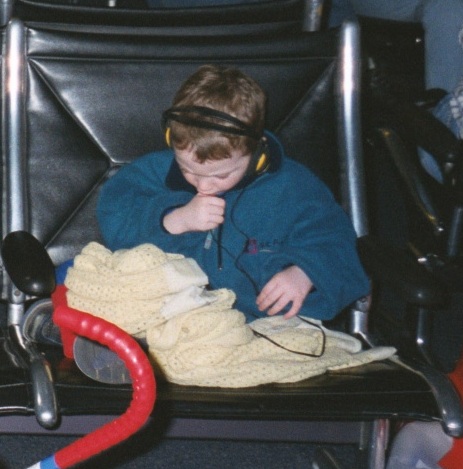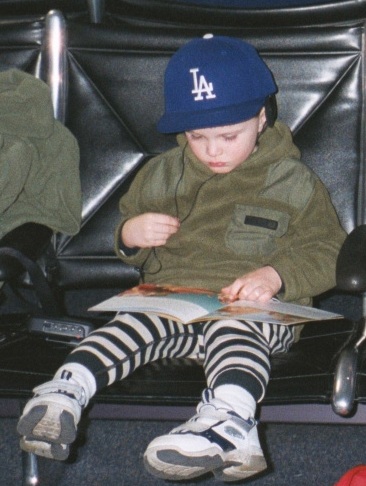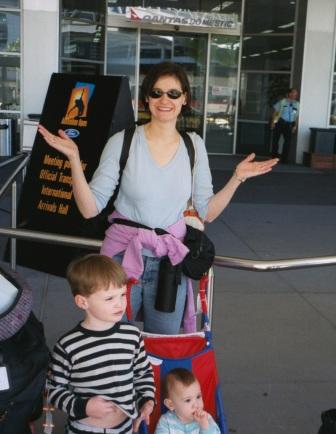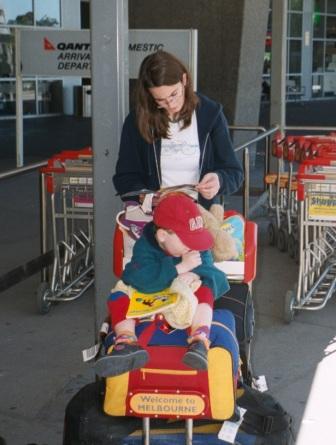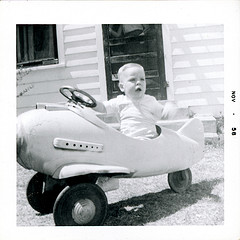
Photo credit: anyjazz65
Chris Elliot’s post regarding an unsuspecting consumer charged for a lap child on an international flight took me by surprise. Chris was obviously provoking a discussion on the outlandish ‘fees and taxes’ levied on airfares. But it seemed to me that very few of the folks who left a comment really knew anything about flying internationally with children under two!
Firstly, in response to Chris, I believe it comes down to the semantic difference between seat, ticket and passenger. In general, all ticketed passengers have seats. Children under two flying domestically may not be ticketed – if they do not have their own seat. Internationally, all passengers (including children under two without a seat) should have a ticket. Taxes and fees are levied on tickets.
On flying with children: I’ve flown internationally with my kids more frequently than domestically (both sets of grandparents and all relatives live overseas), and I’ve worked, lived and breathed technology for all of my adult life so I don’t think twice about researching and finding any information I need online. But I recognize that I’m unusual in this sense and so, it seems to me, that there’s a need for a handy-dandy reference on flying with children for anyone who hasn’t yet flown with their child and is wondering where to start looking for information on how and what to do.
Use the internet for pre-trip research. Most airlines publish their policies relating to the carriage of infants and children (and everything else) on their websites. If you don’t already know the airline’s website address, a simple Google search on the name of the airline with which you wish to fly should help you quickly find it. Most airline websites have at least an FAQ (Frequently Asked Questions) page and also a search box on the website. To find the rules about flying with an infant, search for ‘lap child’. If you’re planning to fly with a low-cost carrier, double-check rules and fees – for equipment such as car seats.
A base airfare DOES NOT INCLUDE taxes and fees. Typical fees added to the cost of the ticket include: taxes, landing fees and fuel surcharges and that’s before calculating extra bag fees, priority seating or any of the other additional charges which airlines have recently started implementing. Some websites and travel agents quote the entire fare including fees and taxes you need to check the details of the fare offered to know exactly what’s included. FREE airline tickets are only free if someone else is paying for your flight.
Airfares are levied per seat not per person . Airlines may run special fares for children between the ages of two and 12, but typically you will pay the same amount for a seat for your child as you pay for your own seat. On domestic flights, a lap child may be free. For international flights, expect to pay 10% of the full fare for a ticket for a lap child. Whether or not the airline charges fees and taxes for a lap child varies by airline. Check the airline policy before you book.
Domestic and International Differences. There are different rules governing the carriage of passengers within a country versus between countries. The legalese for international flights is long and complicated, the fact that a ticket is required for every passenger is important to know.
Age-specific tips
0-6 months. On both domestic and international flights, at this age you can choose to purchase a seat for your child or have him seated on your lap during the flight. Check the airline’s policies before you book. If you wish to bring a car seat on board the plane, your child will need his own airplane seat for which you will have to pay full fare. I strongly recommend always purchasing a seat for your infant. It’s safer and more comfortable for you and him. Plan your flight to coincide with naptimes to increase the probability that your child will sleep through the flight. Since an infant’s daily schedule is not necessarily regular, this can be tricky to plan for, but the hum of the engine often soothes very young children to sleep. Cabin pressure changes are difficult for infants. Try to encourage your child to nurse or suck on a pacifier when these occur at take-off and landing. Make sure to pack sufficient feeding and diapering supplies.
6-18 months. All the suggestions given above for flying with an infant are still valid. But, your child is older and less likely to sleep through the flight. If your child doesn’t sleep, expect to do a few laps of the cabin to keep him amused. Pack snacks and toys for entertainment.
18 months – 3 years. Flying is difficult with children in this age range when most kids are still napping at least once during the day but are on the go the rest of the time. Car seats are optional based on your own safety preferences. The CARES harness is a handy alternative to a bulky car seat. You’ve probably got diapering and feeding on the go mastered by the time your child is this age but for a toddler to sit in a seat for hours at a time is a herculean effort for you and him. Entertainment is key. Stick to simple toys with no small parts (which can fall on the floor and cause you untold misery hunting around among shoes and bags to find them again). Books, crayons and paper, finger puppets, and pipe-cleaners all work well. If you can get your child used to listening to music or audio-books prior to the flight, you will relish in the benefits of this when you fly.
3 years and up. If your child will watch a movie at home, whether you usually limit screen time in your household or not, think about using a portable DVD player or laptop for this when you fly. Until your child can read, movies make flying so much easier. Preschoolers still need some active entertainment (for when the movie is over) and plenty of snacks. Once your child crosses into the elementary school ages, they can pack their own carry-on bag, choose their own treats and generally look after themselves on the plane except maybe, for when you need to escort him to the restroom.
And there you have it. It’s not rocket science (or even jet-engine science). Mostly it’s about being realistic, practical and finding out the information you need before you fly.
Subscribe to this blog using RSS, email or follow me on Twitter.


